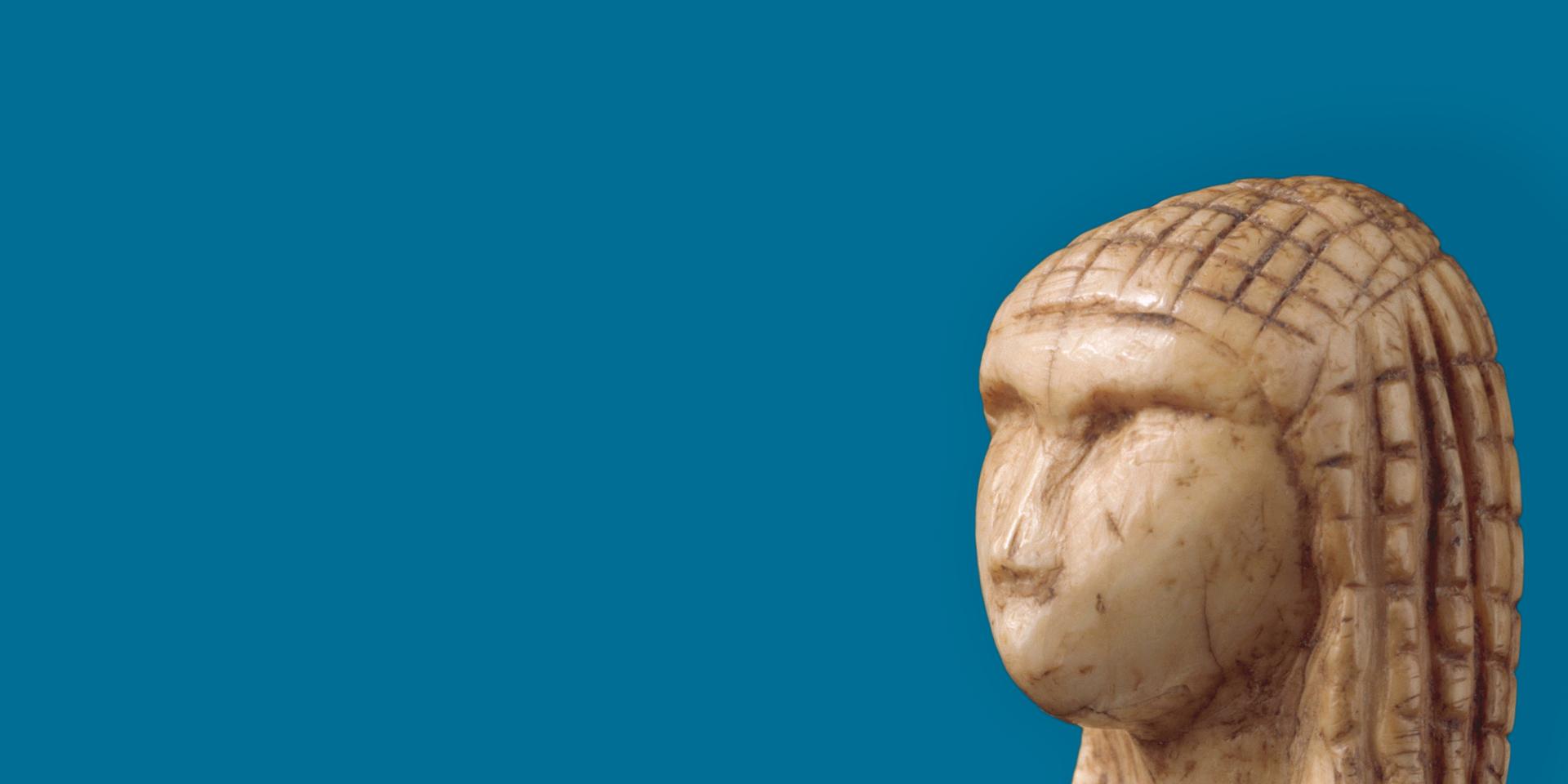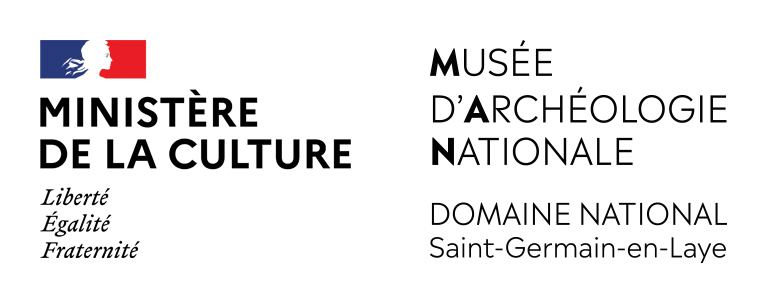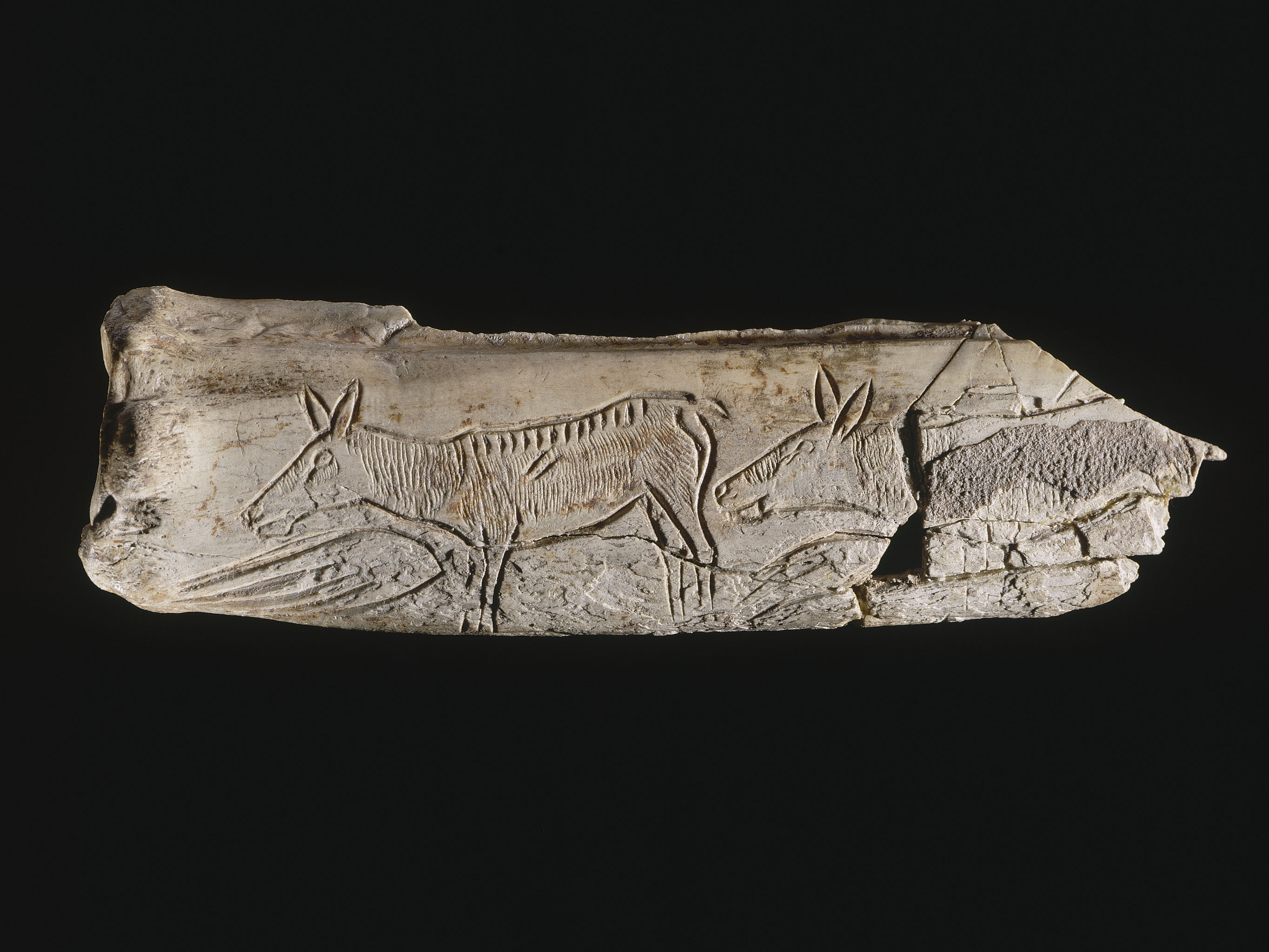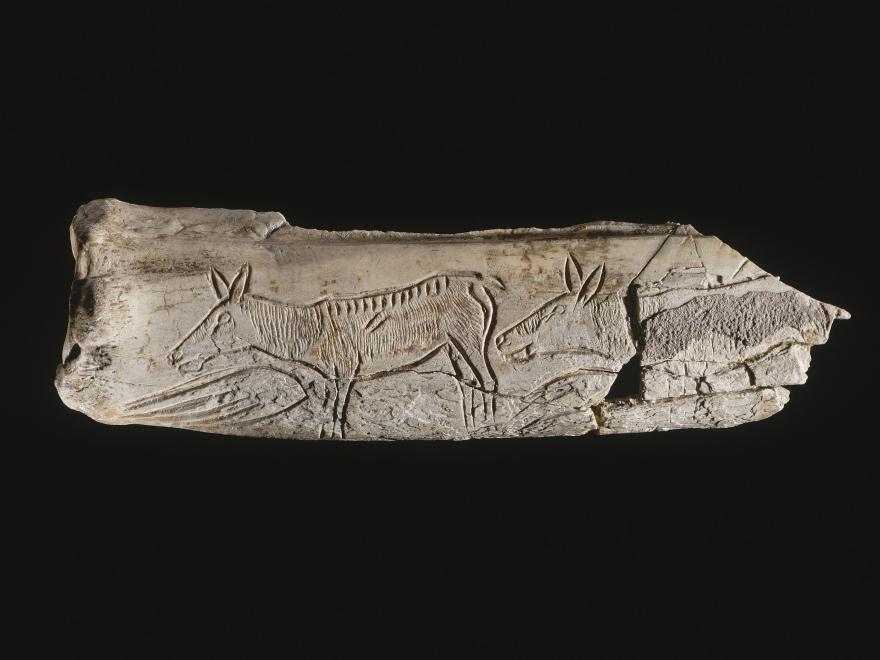
Les collections
From the Palaeolithic to the Mesolithic
Sculpture
The Hinds of Chaffaud
This piece is important in the context of Prehistory. In fact, it is the most ancient example of Palaeolithic mobiliary art to have been discovered (before 1845) and acknowledged as such, having earlier been attributed to the Gauls. Prosper Mérimée made the first tracing of it.
Incised into a reindeer foot-bone, this engraving represents two hinds (the female of the stag, without antlers), one behind the other. The details of the heads of the two animals are very precise. The two ears, the almond-shaped left eye emphasised with fine hatching, the muzzle and the mouth give us an image of two very real hinds. In front of the hooves of each animal, a sign in the form of a wing is engraved, whose meaning is unknown.


